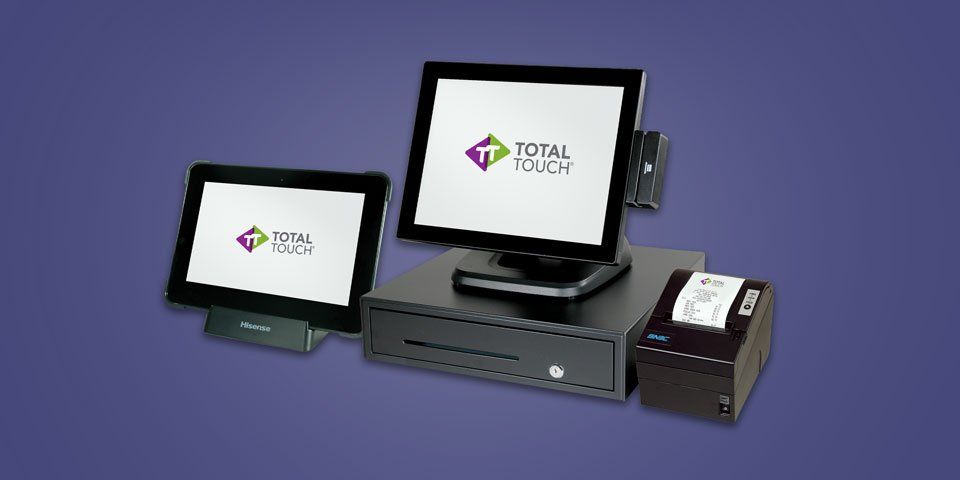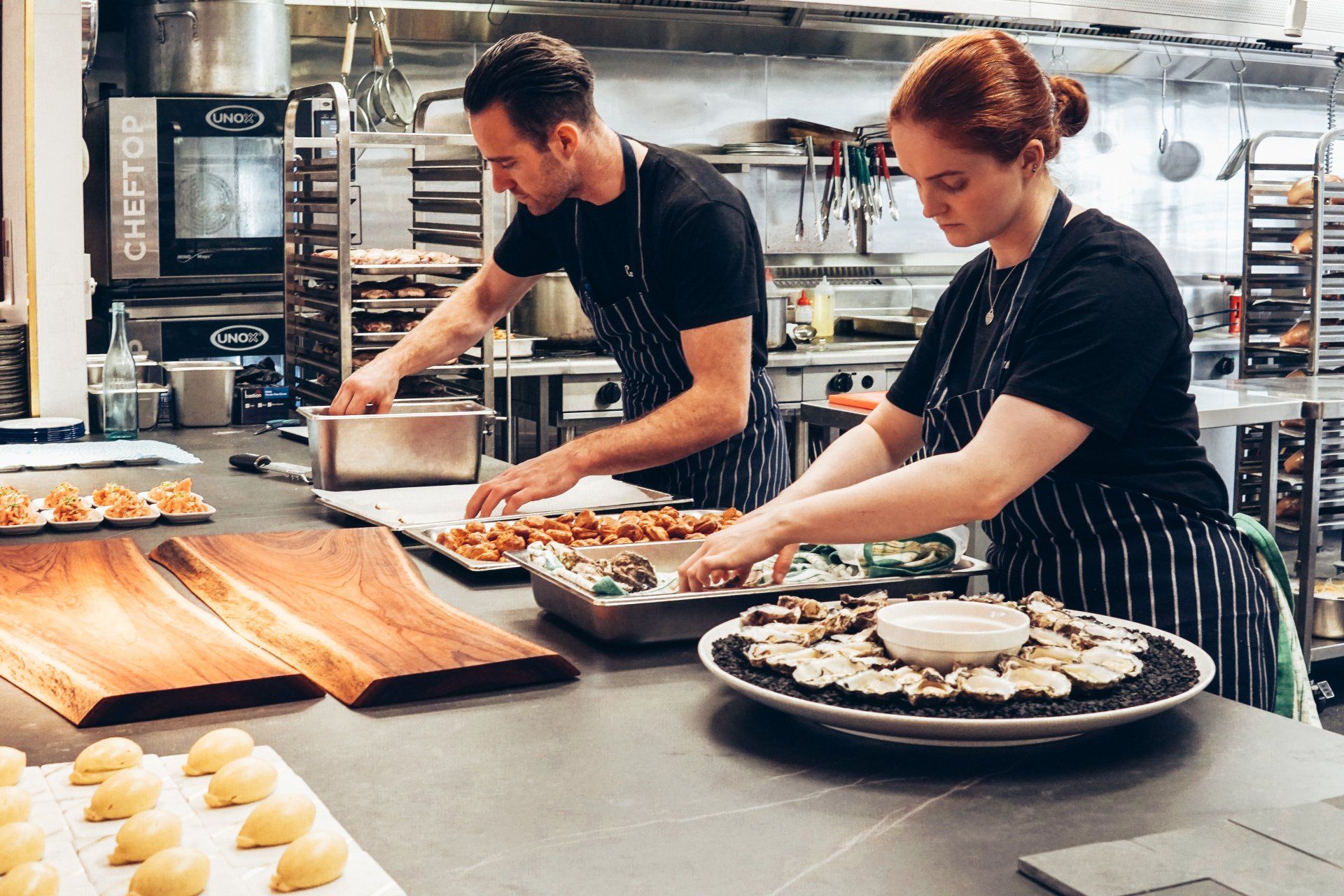Get the leading POS, restaurant management , and online food ordering system that’s built for small business. Contact us for a demo and consultation to learn how you can get this bundle for free! (866) 405-3878
Call to order at (866) 405-3878
Seven Essential Skills for Restaurant Operations and Management
If you’re a restaurant owner or manager, strong leadership skills are fundamental to the success of your business.
From balancing the books to hiring the right staff and keeping customers happy, there is a lot of room for things to go wrong, which can lead to stress, frustration, high staff turnover, and a loss of profit.
Operating and managing a restaurant is a labor of love and many responsibilities. However, no matter where your restaurant currently stands, you and your team can thrive and overcome day-to-day challenges more quickly and confidently by strengthening core leadership skills.
To become a successful restaurant owner or manager, you should know these seven essential restaurant operations and management rules.

Set realistic goals for your restaurant
The restaurant industry is constantly evolving, adapting, and either growing or shrinking. If you are not setting or measuring goals effectively, you could face more uncertainty and risk. There are four critical areas of the restaurant business:
1. Food Selection and Quality
It turns customers into regulars and helps attract new guests. You can set goals to enhance food quality and presentation by analyzing your menu, food preparation procedures, and how the kitchen staff plates the dishes. You can set goals for your team to improve the quality based on what you see.
2. Restaurant Staff
The service industry is all about people, and no restaurant or bar is complete without a solid team. Therefore, creating goals to retain and manage your current team is crucial in developing consistent and high-quality customer service and operations.
It's no secret that restaurants and bars have a high turnover rate, so when setting goals for your staff, focus on creating a healthy and supportive working environment that will keep them loyal, long-term employees. Plans could include updating training methods, clearly communicating expectations and standards, showing appreciation for your staff, updating your restaurant’s management technology, and more. We’ll go deeper on these subjects a little later.
Setting goals that prioritize your employees’ well-being and foster a stable working environment creates a foundation for your restaurant or bar to achieve long-term success with a solid and dependable team.
3. Restaurant Marketing
Digital and word-of-mouth marketing are two of the best ways to build and nurture your customer base and increase profits for your restaurant. Consider your current marketing and promotions strategy if you haven’t already started creating digital marketing goals and strategies to grow your business. For example, do you use email newsletters or social media to spread the word about your restaurant or bar?
Because it’s relatively easy to do, many businesses often use social media for marketing their business. The problem is that measuring and monitoring how and when people interact or view your content is complex.
For example, the holidays are an excellent time to use social media to announce seasonal specials and discounts to attract new customers.
You can easily give audiences a glimpse of your restaurant or bar's theme, showcase an immersive experience, and give them a taste of your seasonal offerings. Still, the content quickly disappears or gets overlooked if a potential customer doesn’t see your posts on time.
The best restaurant marketing practices require focused effort and are more customer-focused than social media. Every bar and restaurant should forego a social media presence until they have a robust and well-maintained local business presence.
- Permission-based text marketing is in the moment, and you’re more likely to fill empty tables with this technique. We recommend the Small Business Big Marketing Podcast episode for fantastic tips and methods to incentivize customers and fill tables! Collect guests’ mobile phone numbers and get permission to share specials and events with them by text.
- Claim and set up your Google Business Profile. Ask visitors to share a review after their visit.
- Visit and claim your Yelp profile. When people travel or want to find a new local restaurant, Yelp is often a go-to because they can explore your menu, hours, location — and most importantly — read what other diners say about their experience.
- Claim and set up your Bing Places for Business profile. Ask visitors to share a review after their visit.
While social media is a great way to connect with new customers, it's also essential to nurture relationships with loyal customers. A point-of-sale (POS) system serves as the perfect connection to your regular diners because it gives you the option to provide a gift and loyalty card program. You can also take advantage of marketing directly to your loyal customers through email with the help of some POS systems.
4. Restaurant Finances
Gaining a solid understanding of your business's profit margins will help your restaurant flourish. Defining financial goals may seem daunting, but you can start pinpointing areas that need improvement and establish S-M-A-R-T goals to improve your revenue. An example of this could be adjusting happy hour offers to attract customers during slower hours of the day.
Implementing cost-effective food options is another crucial element in improving profit margins. Start by assessing your current inventory costs and set goals to reduce them. You could include finding local sources, negotiating with your food suppliers, or developing new recipes with any surplus ingredients you have.
Ultimately, setting goals in the critical areas of food, staff, marketing, and finances is crucial to the success of your business because each plays a foundational role in a restaurant. As you establish and implement goals for your business, use these categories to drive your action plans.
Define your restaurant’s work culture
Just like you decide what your restaurant will serve and who your target customers are when managing your staff, you should outline the work culture for your team upon orientation. Outlining unacceptable behavior from the outset will set the expectations immediately, so there is no ambiguity about how your staff behaves while on shift.
Defining rules or codes of conduct should include guidelines for:
- Using inappropriate language
- Gossiping or teasing amongst staff
- Using cell phones while on-shift
- Customer interaction and treatment
- Internal staff communication and treatment
You can also motivate and inspire your team by defining and implementing your restaurant’s mission, values, and goals. These can include protocols on how to ask for help, sharing positive feedback and staff wins, going the extra mile for customers, creating celebratory rituals when the team hits sales, and other forms of positive reinforcement. However, these rules shouldn’t all be about how not to behave in the workplace.
When your staff feels respected, heard, and valued, they feel more confident and will ultimately become more productive employees.
Know who you are hiring
Understanding each team member’s strengths and weaknesses is crucial to managing them effectively. There are many ways to get to know your staff, including:
1. Team building exercises
There are many fun ways to strengthen the bond between your staff members, and you can get to know them on a more relaxed and casual level, which helps let them be more themselves. Some examples of team-building exercises include:
- Outdoor team sports
- Best cocktail contests
- Scavenger hunts
- Team cook-offs
- Team yoga sessions
- Trivia nights
2. Personality tests
If you want to invest in your employees long-term, it may be helpful to use personality tests to determine their strengths, weaknesses, communication style, and goals. 80% of Fortune 500 companies use personality tests. When you fit the right personality type with the proper role, the employee will enjoy their work more and contribute their skills where they are best suited. Some examples of personality tests include:
- The MBTI Test
- DiSC tests
- Clifton StrengthsFinder
- The Big Five Personality Test
3. Standing one-on-one meetings
Brief check-ins with each staff member one-on-one can do wonders for building and maintaining rapport with your team members. Connecting with the team allows space for regular communication to voice any issues they may face, give feedback, and set goals. Remember, as a restaurant owner or manager.
You are a mentor and a teacher for them and their boss. If they see you are interested in helping them grow their professional skills, they will feel valued and happier at work.

Prepare your staff for unpredictable circumstances
Restaurants and bars can be hectic work environments, mainly when unpredictable situations occur. For example, staff members can call in sick on a busy Friday, causing the kitchen or service to slow down when your restaurant is full of hungry customers, or you could run out of a critical ingredient in the daily special halfway through dinner service.
Many things can go awry throughout the day and cause your staff to feel stressed or overwhelmed. As a manager, you can improve your team's success by preparing them to handle demanding customers, menu changes or alternatives, dietary restrictions, and training them to work in a fast-paced environment.
Some examples of training your staff could include:
- Daily team meetings to discuss the menu, inventory, staff shortages, or anything else that should be top of mind before their shift begins
- A printable list of protocols for handling unpredictable situations as part of new staff orientation
- Verbal role-play with your team to practice handling unsatisfied customers or complaints
- Checking on inventory with the kitchen during peak times of service
While you can’t control everything, you can prepare your team with protocols and procedures to help them handle any unpredictable situation that comes their way. As a result, you will prevent your staff from quitting due to stress and help build a stronger, more experienced team over time.
Implement a reliable restaurant management solution
From planning the menu to balancing the books and managing staff, restaurant owners have a lot of responsibilities that demand time and attention. It can be overwhelming to constantly multitask and put out fires, which is why successful restaurant owners must have systems to keep day-to-day operations running smoothly and efficiently.
As a restaurant manager or owner, the last thing you want to do at the end of your day is to manage your records manually in a spreadsheet and nightly receipts. Don’t take up the well-deserved time off you could spend relaxing with your friends and family.
A point of sale (POS) system provides a way to take orders and multiple forms of payment from customers and used to be considered a cash register. However, point-of-sale systems can do far more when taking payments and can be as small as a mobile phone.
A POS system will instantly collect data from receipts after customers complete payments, which allows restaurant managers and owners to monitor their business performance against revenue goals daily. In addition, it keeps you informed on how the restaurant is performing in real-time throughout the year (even when you’re on vacation!).
When you help your employees do their jobs and serve customers with a POS system like Total Touch POS, it keeps you organized and helps plan and make strategic decisions based on the data it provides.
Total Touch POS is the preferred solution for leading restaurant concepts, from quick-service to fine dining. It is a comprehensive restaurant management solution that helps owners get the information they need to run a profitable and successful business.
Let’s dive deeper into how Total Touch POS can make restaurant management more effortless.
Monitor Restaurant Inventory
A good restaurant is all about seasonal ingredients, fresh menu items, food quality, and consistency. Restaurants have a diverse inventory than most other retail businesses because of the varied ingredients needed at any given time. You don’t want to run out of a critical element in the middle of a busy day. With a robust POS system, you can track your inventory at the ingredient level and order supplies in advance. You can also compare prices to get the best quote for your stock.
Reduce Food Waste
Total Touch POS version 2.4 and above come with integrated scale support that allows you to size your portions accurately to reduce food waste and over-spending on too much of any one item. Total Touch also offers ‘pour control’ features for bars and restaurants so that they can easily dispense precise amounts of alcohol every time.
Retain Customers with Built-in Loyalty Programs
You can use this data to create personalized loyalty programs for your regular customers. Automation can save your marketing team an enormous amount of time trying to make special offers that won’t appeal to every individual customer.
Improve Staff Management (and Morale)
Running short on staff is a nightmare. It can lead to slower service, poor-quality food, and payment and order tracking mismanagement. With an advanced POS system like Total Touch, you can automate staff scheduling, payroll hour calculation, and track time to manage employees efficiently.
Save your team’s time and stress trying to resolve scheduling issues so you can all work together smoothly and happily!
Identify Sales Trends
A modern POS software has a record for every dish ordered at your restaurant, which goes into a cloud-based business report database. For example, Total Touch generates real-time reports to give valuable insights on which menu items are popular, rarely requested, or need replacement. You can also gauge the seasonal preferences of your customers and make changes to the menu accordingly. This strategy is fool-proof and takes the guesswork out of trying out new menu items by giving the customers what they want based on the data.
Make Informed Decisions
Total Touch is an advanced POS solution that experts designed with the restaurant industry’s needs in mind. It can help you with every aspect of your restaurant business, including sales, inventory management, communication with the kitchen and waiting staff, and employee management. With its robust reporting system, you can identify patterns and trends in your business to make more informed decisions and improve your restaurant’s service quality, productivity, and revenues from cloud-based business analytics.

Set clear expectations and provide constructive feedback
Building a solid and productive team starts by setting clear goals and expectations for your employees. When you share your expectations with your staff, you are helping them see the bigger picture and how their roles contribute to your restaurant business thriving.
Set clear expectations
Municipalities regulate restaurants for many reasons—one of the biggest is food safety. Communicating specific expectations without context may reduce your ability to meet regulatory standards. For example, someone may not know why you asked them to set the refrigerator to a specific temperature or restock the shelves at the end of the shift.
When they set the refrigerator at the mandatory temperature, you can tell them how important it is that they helped to adhere to health codes and ultimately help the restaurant to stay open. Restocking shelves helps the next shift prepare for customers and reduces their workload. Setting clear goals for each team member keeps your team productive and on track.
Provide constructive feedback
The pressure of managing restaurant staff can be frustrating. While reviewing mistakes and planning solutions to work through the confusion is productive, constant negativity can discourage staff. You don’t want to call out your staff's mistakes at the moment, as this can lead to a toxic work environment.
Managing your employees well to create a balanced and healthy work environment starts with recognizing what they are doing right. When you acknowledge your staff’s strengths, you'll encourage high-performing behavior, and your team will thrive.
Effective communication starts with empathy, so keep this in mind when you want to give constructive feedback.
Here are four ways to provide feedback that will ultimately empower your employees.
Use the compliment sandwich method
- Start with stating a compliment
- Share your constructive feedback
- Provide another friendly acknowledgment
Example:
“The customers love how you interact with them! You’ve got a great attitude, and I appreciate that. Keep it up! Quick note: If you're confused about how to cash out before going on break, ask me so that we can avoid mistakes. But all in all, you are doing a great job!”
Give praise in public, critique in private
Set up a private meeting with your staff member to review mistakes so you avoid embarrassing them in front of the whole team. When you have time before the meeting, this will also allow you to cool down from the incident and help you give the correct feedback rather than react at the moment.
Provide solutions
If your staff member makes the same mistake repeatedly, you can help them by working together to come up with a solution when you provide them constructive feedback. Then, once they decide to take action, you can keep them accountable and help them become better employees.
Focus on the behavior
There’s a difference between criticism and critique. We tend to view “constructive criticism” as unfavorable, yet you can frame a critique as an opportunity to learn and grow based on your review and feedback.
You may not address the mistake's root cause when you critique specific actions. Framing feedback to focus on behavior and how to change it addresses the constructive feedback in a way that will help them feel empowered to grow.
“Don’t point out faults, but growth opportunities. Start with your intention, why you are the person to share this feedback and how you are willing to help the person learn from it.” —Forbes.
Gain respect from your community
We all do business with people we like, first and foremost. As a restaurant owner or manager, you must inspire your employees and the customers you serve daily. Serving food is a labor of love, and when you show up with a warm and friendly attitude, your community will look at you as someone who cares about them.
Your employees should be treated and fairly compensated with the respect that will show your customers they enjoy working for you. By providing top-notch customer service and delicious, high-quality food, your restaurant can continue to grab attention, leading to hundreds or even thousands of five-star reviews that will help you gain more customers.
Successful restaurant owners know everything about the ins and outs of their business.
Being a confident leader can look like asking for feedback from your customers and employees, keeping up to date with what your competitors are doing, and most importantly, being willing to learn and make changes to continually improve the service, quality, and revenue.
Get our latest articles delivered to your inbox
Tired of high credit card processing fees? Ask your Authorized Dealer how Total Touch integrates with gift card, loyalty programs, and preferred merchant services that help you grow your profits.
For Dealers & Resellers
Become an Authorized Dealer »
Enter the Dealer Portal »
Share a Review on Capterra
Confidential Credit Card Rate Analysis
*Terms and conditions apply. Requires enrollment in the Total Touch Processing Payback Plan.




